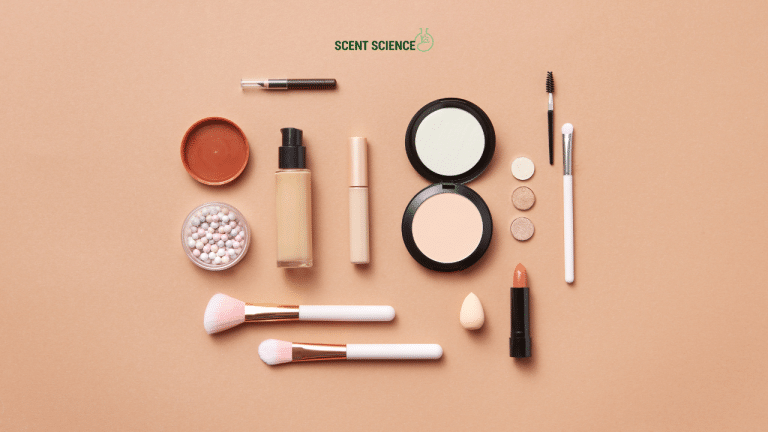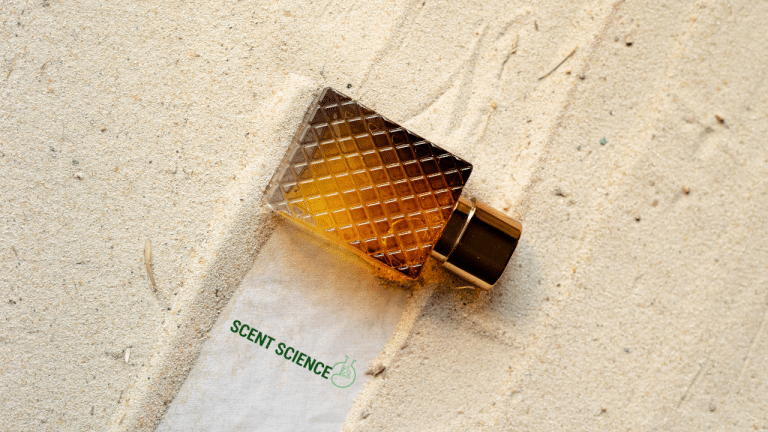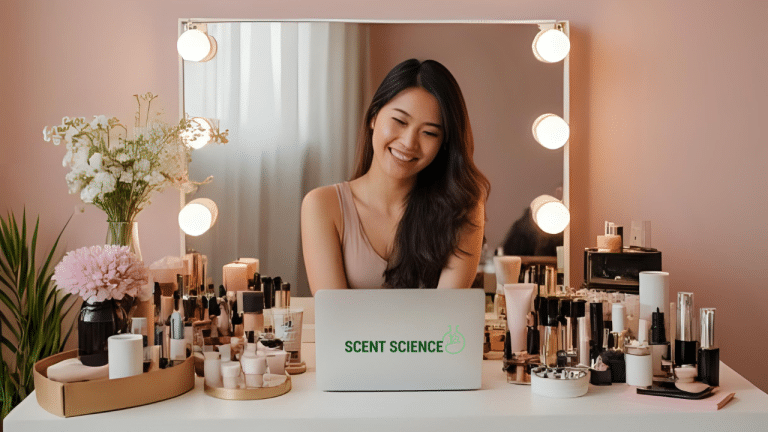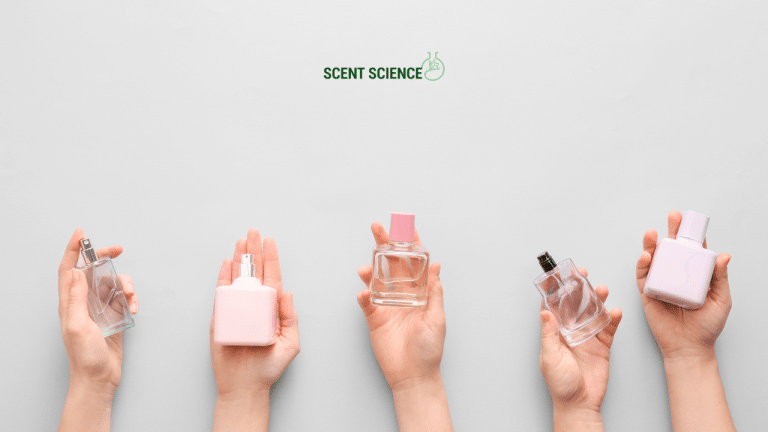Imagine this: You’ve just bought a luxurious perfume with a scent that makes you feel like you’ve just stepped into a field of blooming flowers on a perfect spring morning. But after a few months, you notice something… different. Somehow, the fresh, beautiful scent transformed into something not-so-awful but definitely less pleasant. What happened here? Well, it’s time to dive into the fascinating and sometimes confusing world of **fragrance oxidation science**.
Table of Contents
ToggleWhat’s Happening in Your Bottle?
Ok, let’s get down to business. Fragrance oxidation happens when your perfume reacts with oxygen over time, altering its molecular structure. This can lead to the scent changing, sometimes becoming sharper, sour, or just… odd. Perfumes are mixtures of volatile compounds, and as these compounds react with the environment, particularly with oxygen, their characteristics can evolve significantly.
Understanding **perfume chemistry** helps here—essentially, it boils down to keeping your perfume feeling like it’s as new as the day you bought it.
Now, before you stress out about the perfume on your dresser, it’s important to know that oxidation is normal, something almost unavoidable over long periods. However, understanding how it happens and what you can do about it may save your favorite scents from an untimely end.
Key Factors of Fragrance Oxidation
1. Volume of Air in the Bottle
One of the most straightforward causes of oxidation: air. Every time you spray your favorite scent, a little void is left in the bottle and guess what fills that void? Mmhmm, air. More air equals more oxygen, which can lead to faster oxidation.
2. Light Exposure
Have you ever noticed how most perfume bottles are in tinted glass? It isn’t just for aesthetics. Light, especially UV light, can accelerate oxidation. It’s like leaving butter out on the counter—it loses its charm faster under the sun.

3. Storage Temperature
Fragrances love the cool, dark, and dry. Think about this: your fragrance has the heart of a cozy cellar grotto. Storing perfumes in a hot and humid environment makes way for oxidation faster than you can say “Eau de Toilette”.
4. Type of Ingredients
Fragrances composed of natural ingredients may oxidize differently from synthetic ones. Citrus notes, for instance, are quite volatile and can be more susceptible to oxidation compared to woody .
Guarding Your Fragrance Like a Pro
So, how can you keep that precious scent as fresh as a field full of flowers? Here are some practical steps you can take:
1. Pick a Favorable Spot
Stash those bottles in a drawer or opaque box—or be a fridge rebel if space allows. By reducing light exposure, you’re giving your scent a breath of relief. Just remember: it’s about keeping cool and dark, so those bathroom countertops are a no-go. Too humid and sweltery.
2. Play with the Size of Your Bottles
Buying larger bottles? Sure, seemingly economical. But that might lead to the bottleneck of oxidation issues if the time horizon before it’s used up is longer. Smaller bottles, on the other hand, usually get consumed quicker, tipping the balance graciously in the perfume’s favor.
3. Avoid Shaking It Like a Maraca
Ever given your perfume a good shake before applying? Here’s a secret: you’re actually speeding up the oxidation process by introducing more air into the mix. Instead of getting an Oscar-worthy opening scene, you’re oxidizing those precious top notes.

4. Love the Cap
This might sound straightforward but ensuring your bottle’s cap is on tightly can reduce air exchange and prolong the dance your perfume has with oxygen. Loose caps mean oxygen baths for those notes—keep it on tight, always.
5. Consider the Ingredients
Needless to say, perfumes high in alcohol are less prone to immediate oxidation since alcohol can act as a preservative of sorts. But bear in mind, different ingredients age uniquely. As mentioned earlier, citruses usually oxidize faster than the rest, so give those key limes a respite.
The Chemistry That’s Brewing Inside
Alright, mixing science with everyday language isn’t everyone’s cup of tea, but perfume chemistry is fascinating. Every fragrance is essentially a concert of harmonized chemistry—base, middle (heart), and top notes each have molecules that challenge the others. And it’s this dance that makes them smell oh-so-divine.
Esters and Aldehydes:
Your top note heroes. Interestingly enough, these compounds begin the oxidation journey earlier, potentially leading to noticeable changes early into a fragrance’s life. Or, rectangles gone squid.
Terpenes:
Say hello to bolder scents, the woody and resinous friend you take on long strolls. Unfortunately, though stellar, some terpenes can degrade, largely due to oxidation, throwing off the scent pyramid. Visualize your stepping stool losing that comfortable second step.
Vanillin and Ethyl Maltol:
Okay, not as chemically aggressive when reacted with oxygen, but being prominent in gourmand fragrances means their transformation mellowing from soft and sweet to something more undefined must be noted.

To Test or Taste?
So, the inevitable question: can we extend or anticipate the oxidation tango comfortably? Well, just like determining which wine works best to cook with, there are ways to test fragrance oxidation.
Color Change as An Indicator
Even kids know when the apple turns brown it’s going south—ditto for perfumes. While slight darkening can be subtle over a long period it signifies one thing: oxidation.
Scent Check, Reliable Senses
Give it a try. A snifty whiff of initiative works wonders. Smelling becomes the lens through which fragrances exposed to days of light basking reveal their tales of tarnished elegance. It doesn’t go from ‘magnolia mist’ to ‘landfill’. You’ll feel slight differences.
Chemical Analysis Techniques
Bit of a lab nerd? Analytical chemistry methods such as Gas Chromatography-Mass Spectrometry (GC-MS) get precise—even detective level—but not quite in our casual chest of tools. Still, worthy of a mention for the adventurous.
Parting Thoughts
Reckoning fragrance oxidation science might seem daunting, but in truth, it’s all about understanding the lifecycle of your fragrance and balancing this chemistry concert with habitable practices. Next time you spritz, savor that marvelous range of balanced compounds before they get all chemical on you. Keep it cool, tight-lidded, prefer flow alongside perspiration over mix-ups, and Uncle Chemistry could walk you through storage purgatory toward perfumed paradise.
In the end, it’s your relationship with this sensual interpretation of perfume chemistry that turns theory into experience, and breathes life into the art and science of scent. Feel free to circle back; after all, in this zesty world—the perfume realm—there’s elegance to every properly capped and handled blend.
So next time, when those volatiles turn vault in search of potent memories, relish that remarkably covert little bit of science whispering ever lightly behind every top, heart, and base note: fragrance oxidation thread unwinding gracefully with time.
Frequently Asked Questions
How often should I wash my face mask to prevent maskne?
To prevent maskne, it is crucial to wash your face mask regularly. For fabric masks, wash them after every use, similar to how you would wash your underwear[2][3][4]. Disposable masks should be tossed after each use to prevent the buildup of bacteria and other contaminants[3][5>.
What type of skincare products are best for preventing maskne?
For preventing maskne, use skincare products that are oil-free or noncomedogenic. These products, such as gentle cleansers, moisturizers, and sunscreens, help prevent clogged pores and reduce the risk of acne. Look for products containing salicylic acid or benzoyl peroxide for their acne-fighting properties[1][3][4>.
How can I reduce friction and irritation caused by wearing a face mask?
To reduce friction and irritation, choose a mask that fits well and is made from breathable fabrics like cotton or bamboo. Loosen the mask straps, use pads under the straps, or consider a headband-style mask to minimize friction. Taking brief breaks to remove the mask and allow your skin to breathe can also help[2][3][5>.
What are some additional tips to prevent maskne while wearing a face mask?
In addition to regular mask washing and using the right skincare products, avoid touching your face, skip makeup or use noncomedogenic makeup, and moisturize your skin to keep it hydrated. Also, limit the use of active ingredients like retinol or benzoyl peroxide during the day when wearing a mask, and consider using a topical antimicrobial cream to prevent bacterial buildup[1][3][4>.
References
